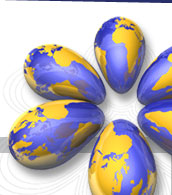|
Wines
- Wines from any country or region on the condition that they have been made with natural fermentation techniques.
- Categories of effervescent wines that can be entered:
• Table wines with indication of geographical origin
• Varietal wines
• Quality wines from a designated appellation of origin
• Imported wines with indication of geographical origin
• Quality sparkling wines
- Samples must represent a total volume greater than 10 hl.
- Samples must be presented in a glass container with a volume between 375 ml and 1000 ml.
- Labelling in compliance with EU regulations, including indication of:
- Geographical origin
- Year of production
- Name of bottler.
- Each sample shall be accompanied by:
- A description of grape-growing / winemaking conditions (soil type, climate, harvest, winemaking, ageing, varietal make-up of the base wine, etc.).
- An analysis report for the wine at the time of bottling as issued by an officially recognised laboratory from the country of origin.
- 3 labels.
- Six bottles.
|
 |
|
Controls
Under the control of SAQ.
|
|
 |
|
Expert Judges
- Qualified persons with competences in sensory analysis and a good knowledge of sparkling wines.
- These competences will be verified during a mandatory evaluation session for judges.
- The Jury is composed of qualified persons.
|
|
Tasting
- Blind tasting.
- Strict application of the international wine judging standard.
- Max. number of samples: 10 per jury.
- Wine tasting sheet adapted to sparkling wines, after consultation with the engineers and oenologists from Forum Œnologie and SAQ, with participation from researchers at the University of Reims. This presentation enables data input and processing by computer.
|
|
Special Clauses
- Official languages: French, English.
- Documents available in: French, English.
- Strict application of the international wine judging standard.
|
|




